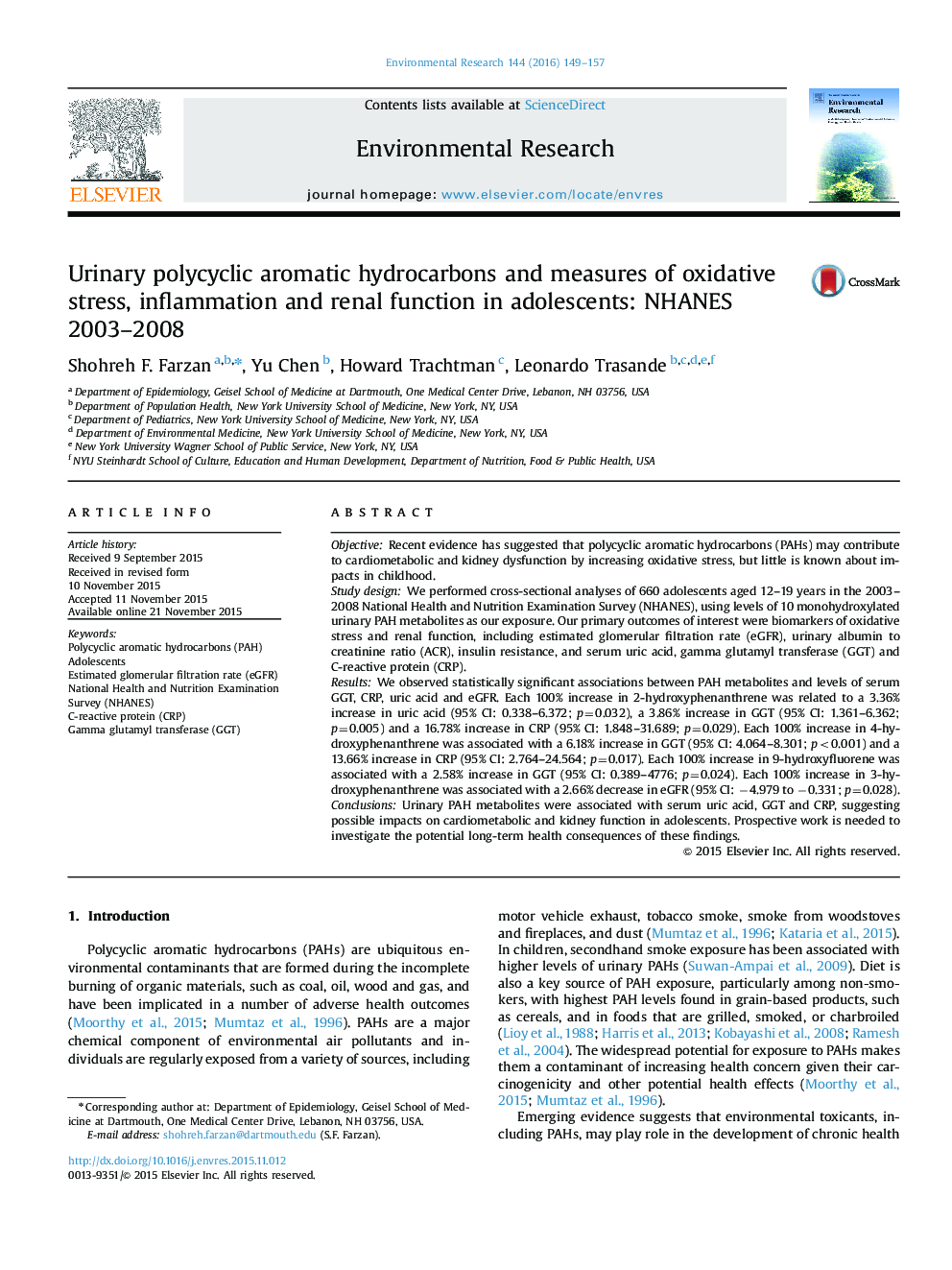| کد مقاله | کد نشریه | سال انتشار | مقاله انگلیسی | نسخه تمام متن |
|---|---|---|---|---|
| 4469654 | 1314296 | 2016 | 9 صفحه PDF | دانلود رایگان |

• Polycyclic aromatic hydrocarbons (PAHs) are ubiquitous environmental contaminants.
• Younger populations may be more susceptible to the harmful effects of these exposures.
• Little is known about how PAHs may impact health in childhood and adolescence.
• PAH exposure was related to oxidative stress and renal function markers in adolescents.
• PAH urinary metabolites were associated with serum GGT, CRP, uric acid and eGFR.
ObjectiveRecent evidence has suggested that polycyclic aromatic hydrocarbons (PAHs) may contribute to cardiometabolic and kidney dysfunction by increasing oxidative stress, but little is known about impacts in childhood.Study designWe performed cross-sectional analyses of 660 adolescents aged 12–19 years in the 2003–2008 National Health and Nutrition Examination Survey (NHANES), using levels of 10 monohydroxylated urinary PAH metabolites as our exposure. Our primary outcomes of interest were biomarkers of oxidative stress and renal function, including estimated glomerular filtration rate (eGFR), urinary albumin to creatinine ratio (ACR), insulin resistance, and serum uric acid, gamma glutamyl transferase (GGT) and C-reactive protein (CRP).ResultsWe observed statistically significant associations between PAH metabolites and levels of serum GGT, CRP, uric acid and eGFR. Each 100% increase in 2-hydroxyphenanthrene was related to a 3.36% increase in uric acid (95% CI: 0.338–6.372; p=0.032), a 3.86% increase in GGT (95% CI: 1.361–6.362; p=0.005) and a 16.78% increase in CRP (95% CI: 1.848–31.689; p=0.029). Each 100% increase in 4-hydroxyphenanthrene was associated with a 6.18% increase in GGT (95% CI: 4.064–8.301; p<0.001) and a 13.66% increase in CRP (95% CI: 2.764–24.564; p=0.017). Each 100% increase in 9-hydroxyfluorene was associated with a 2.58% increase in GGT (95% CI: 0.389–4776; p=0.024). Each 100% increase in 3-hydroxyphenanthrene was associated with a 2.66% decrease in eGFR (95% CI: −4.979 to −0.331; p=0.028).ConclusionsUrinary PAH metabolites were associated with serum uric acid, GGT and CRP, suggesting possible impacts on cardiometabolic and kidney function in adolescents. Prospective work is needed to investigate the potential long-term health consequences of these findings.
Journal: Environmental Research - Volume 144, Part A, January 2016, Pages 149–157